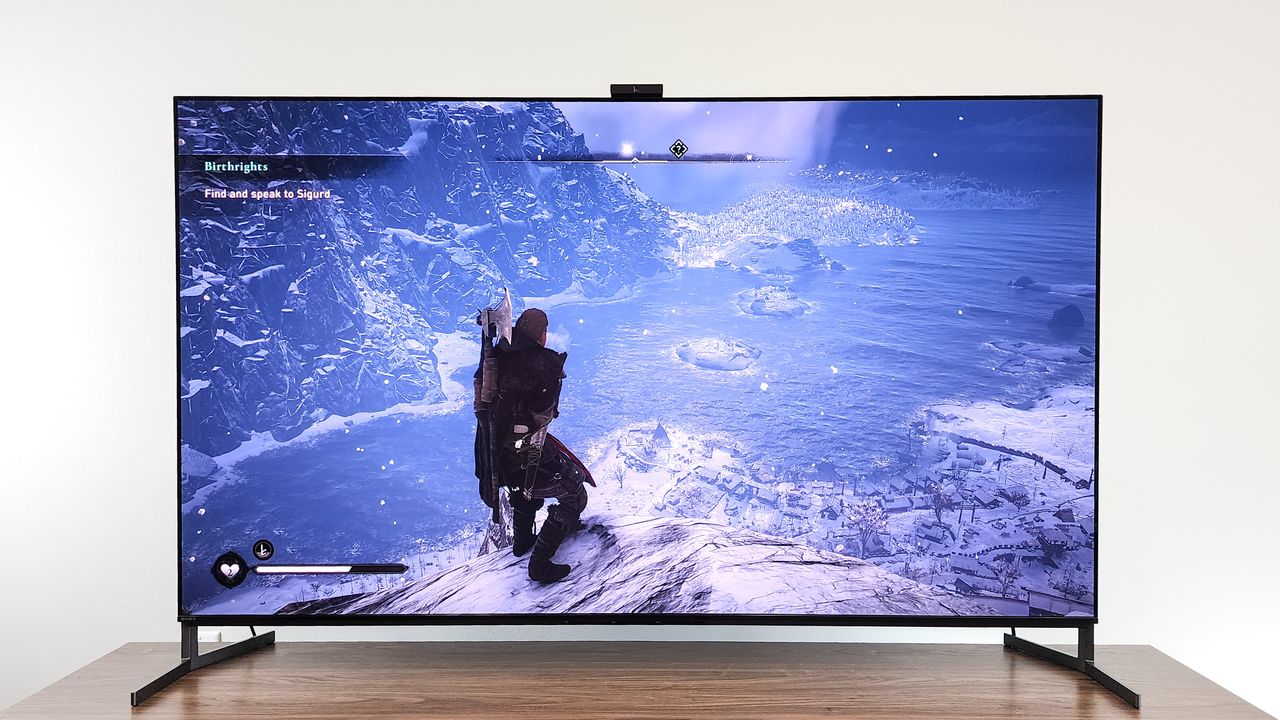
Home theater technology has gotten a whole lot better, and the standards of what you can expect from your TV's quality have risen significantly, in part thanks to standards like Dolby Vision. But these days, it can be hard to figure out what formats and certifications are actually important when buying a new TV. One of the latest of these certified formats is called IMAX Enhanced.
IMAX Enhanced has been around since 2018, and as you might expect, it's basically a certification program run by IMAX. But does IMAX Enhanced actually matter, and is it worth looking for a TV or audio system that specifically supports it? Here’s everything you need to know.
What IMAX Enhanced actually means
While most of the labels on the side of your TV's box probably relate to either video or audio standards, IMAX Enhanced actually relates to both of them. That's right, unlike a format like Dolby Vision, which only has to do with your TV's picture quality, IMAX Enhanced aims to set high standards for the entire watching experience.
The first component of IMAX Enhanced is that content is remastered using IMAX's Digital Media Remastering (DMR) technology. The goal of this process is to reduce noise and deliver a brighter, more vibrant end result. IMAX Enhanced, however, isn’t a HDR format on its own – instead, there’s IMAX Enhanced content in a variety of HDR formats, including HDR10. But, it’s all remastered to fit IMAX’s requirements around color and contrast.
One of the most interesting things about IMAX Enhanced is the aspect ratio that it uses. Many movies these days follow the ultrawide 2.39:1 aspect ratio. This means that the picture is 2.39 times wider than it is tall; on a TV it results in those black bars above and below a movie.
IMAX Enhanced, however, follows a 1.9:1 aspect ratio, meaning that you'll get a lot more vertical video than you would if you were watching in the ultrawide format, which in turn makes those black bars smaller and the movie more immersive. That’s because movies shot for IMAX theaters use special cameras that film in that taller aspect ratio.
The second component relates to audio. IMAX Enhanced was actually co-developed with DTS, and to earn IMAX Enhanced certification, TVs need to meet a series of different criteria for image quality while also supporting DTS audio specifically tuned for IMAX's sound signature. IMAX enhanced content needs to support DTS:X, specifically tuned to follow the IMAX signature sound profile, which IMAX says includes preserving the full dynamic range of the original mix.
What a TV needs to support IMAX Enhanced
If you want to take advantage of IMAX Enhanced content, you’ll need a TV that’s officially certified for it – though the good news is that the requirements aren’t overly restrictive. Most of the best TVs from brands like Sony, TCL, and Hisense already meet the necessary criteria.
To earn that certification, a TV has to hit several performance standards. For starters, it has to support 4K HDR and include a IMAX Enhanced mode calibration profile optimized for IMAX content. IMAX doesn't publicly publish the exact numbers needed for things like brightness, contrast, and color accuracy though.
Equipment also has to support DTS:X decoding or integration so that it can reproduce the immersive audio associated with DTS:X. TV’s themselves, of course, don’t need to have the speakers built in to get the full DTS:X experience – they just have to be able to recognize and transmit the DTS:X signal to your compatible sound system — here's where it also pays to have one of the best soundbars.
It’s also worth noting that you may need to manually enable the IMAX Enhanced mode on your TV when viewing content that supports it. Your TV will likely switch to a HDR mode that works with the content your watching, but it may not specifically be the IMAX Enhanced mode.
How does IMAX Enhanced compare to other formats?
Think of IMAX Enhanced more like a bundle of formats and requirements rather than a format on its own. IMAX Enhanced content is remastered to fit IMAX’s criteria, but it can support different HDR formats with the DTS:X audio format and still technically be IMAX Enhanced.
Of course, the bigger difference relates to the aspect ratio, at least when it comes to video quality. That’s probably the first thing you’ll see when you watch IMAX Enhanced content – though keep in mind that often, not all scenes are shot with the taller aspect ratio.
Do you really need IMAX Enhanced?
As you can tell, IMAX Enhanced is pretty different from other formats, but if you have a TV that supports IMAX Enhanced content, you know that it at least hits those IMAX benchmarks related to video and audio quality. It's worth pointing out that, at least as far as streaming goes, there's not a ton of content that supports IMAX Enhanced – though the selection is thankfully growing. So, while you probably don’t need IMAX Enhanced support on your next TV, there are lots of models that support it, and it could be a good barometer for you in terms of making sure a TV has a high image quality.







